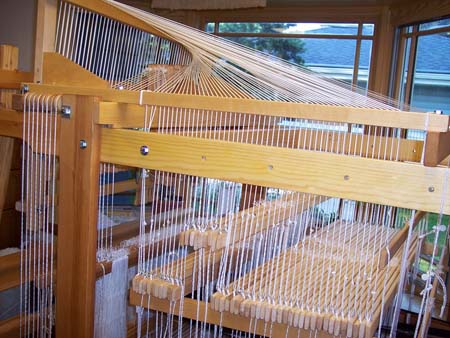
The basic loom - the Lilla (small footprint) vertical countermarche loom from Öxaback. 8-shafts, 8 treadles. 100cm weaving width.

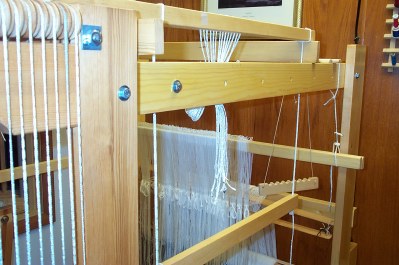 Building a drawloom requires that the loom be warped step by step during the construction of the drawbridge. Here is the loom with the warp beamed and threaded through the pattern heddles. Pattern heddles are first divided into groups corresponding to the number of threads in a pattern unit - in this case 6 - and each group weighted with a u-shaped weight or lingo. At this point, all pattern heddles are held on the heddling bar awaitin later distribution to the pattern shafts. Cords through the frame at top are from installing the pull cords and handles in the draw bridge.
Building a drawloom requires that the loom be warped step by step during the construction of the drawbridge. Here is the loom with the warp beamed and threaded through the pattern heddles. Pattern heddles are first divided into groups corresponding to the number of threads in a pattern unit - in this case 6 - and each group weighted with a u-shaped weight or lingo. At this point, all pattern heddles are held on the heddling bar awaitin later distribution to the pattern shafts. Cords through the frame at top are from installing the pull cords and handles in the draw bridge.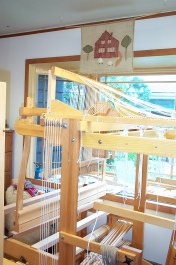 Front of loom at the same point.
Front of loom at the same point. 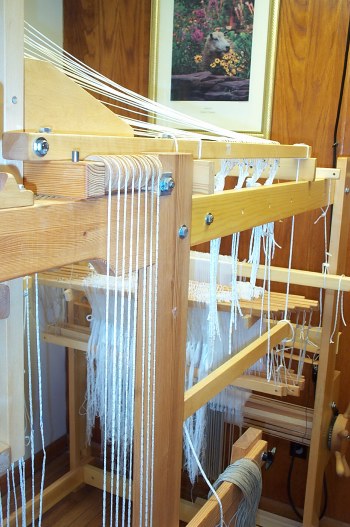
The next step is to move the ground shafts back near the pattern heddles, hang them in the shaft holders and thread them. This is accomplished by sitting inside the frame of the loom and sleying the heddles in a straight draw following the order of threading in the pattern heddles. Since the ground heddles have a 6cm eye they are easily threaded using only fingers.
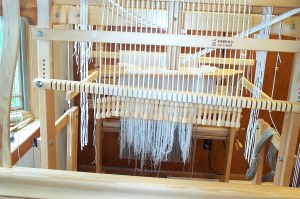
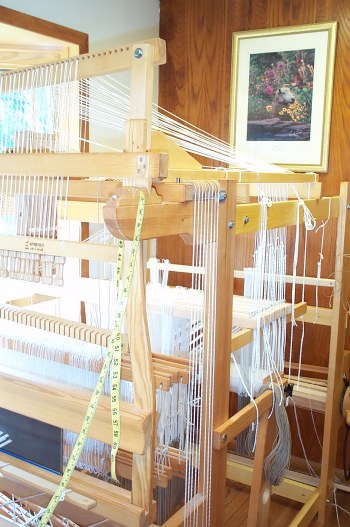 Now the ground shafts have been moved back into position just behind the beater, the reed has been sleyed (hanging just in front of the ground shafts BEFORE) they were moved forward.
Now the ground shafts have been moved back into position just behind the beater, the reed has been sleyed (hanging just in front of the ground shafts BEFORE) they were moved forward.
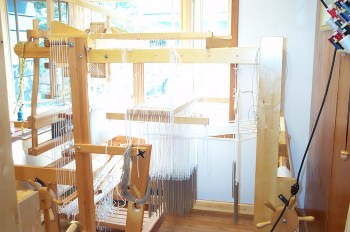
![]()
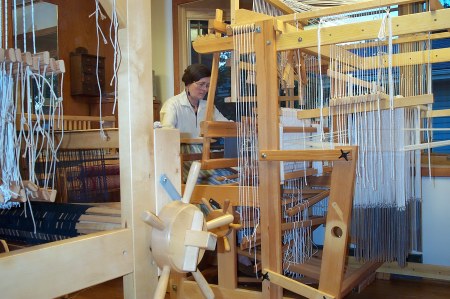

2005 - One year later - the drawloom has now been completely set up with all 50 pattern shafts. The pattern being woven is the sheep from our company logo to be used as "advertising" on our stand.
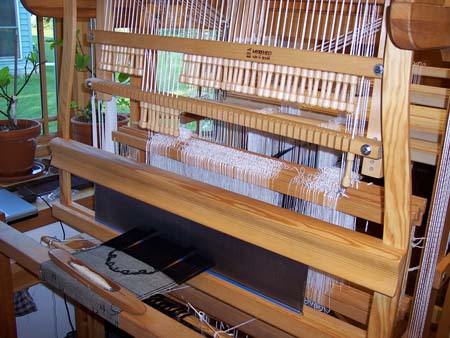
The "console" of the loom as it appears to the weaver. Quite an array of "sticks and string" but once understood, it is a quiet and fascinating place to weaver.

The arch of cords from the comber board make a lovely display in their own right - loom seen from the side.
